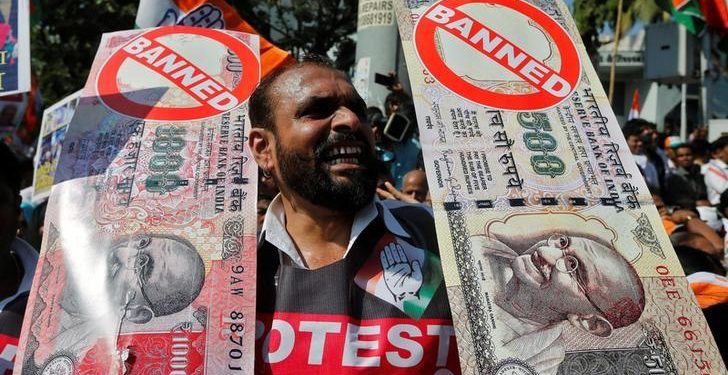Santosh Kumar Mohapatra
On the evening of November 8, 2016, Prime Minister Narendra Modi announced the demonetisation of currency of denominations 500 and 1,000 to combat black money, corruption, fake currency and terror financing. Three years later, none of these goals seem to have been met.
Since demonetisation, banking frauds and NPAs have increased faster. The rise in expenditure on elections shows that corruption, and black money hoarders are ruling the roost.
According to a study by Centre for Media Studies (CMS), Rs 60,000 crore was spent on the Lok Sabha elections 2019. BJP alone spent 45 per cent of it —twice what it spent in the general elections of 2014. There are at least 75 to 85 seats where individual candidates spent more than Rs 40 crore, which is over 50 times the expenditure limit (Rs 70 lakh) mandated by the election commission per candidate in a constituency.
The National Crime Records Bureau (NCRB) report for 2017, the latest, gives a clear indication that the hazard of fake currency continues even after demonetisation and the rate of crime has increased.
In 2017, 3,55,994 fake notes for Rs 28,10,19,294 were seized. Crime in India rose by 3.6 per cent in 2017 as against 3 per cent in 2014. These belie the claims of the government on the benefits of demonetisation.
After demonetisation, Currency in circulation (CIC) had fallen to around Rs9 lakh crore in January 2017, from Rs 17.97 lakh crore on November 4, 2016. However, CIC has jumped by 19.14 per cent to a record high of Rs 21.41 lakh crore as on March 15, 2019, indicating that cash is back in the financial system. Even the cash-to-GDP ratio, is inching back towards pre-demonetisation levels of 12 per cent.
Data released recently by National Account Statistics (NAS) shows that Indian households were also quick to accumulate significantly more cash after demonetisation than they previously held. Demonetisation’s record on promoting digital transactions has also been weak. Although cashless payments saw a spike immediately after demonetisation, its growth has subsided to pre-demonetisation levels. Consumers continue to prefer cash to avoid tax liability arising from unaccounted income.
What is disquieting is that the government has continued to shift goalposts to camouflage its failure. While demonetisation may have led to a spike in new taxpayers, it has also led to a historic rise in the number of people who stopped filing taxes, perhaps because of loss of jobs or income that year. In 2016-17, the number of stop filers soared tenfold to 88.04 lakh from 8.56 lakh in 2015-16. Even in 2018-19, the government could not meet its revised revenue target that fell short by Rs 1,56,700 crore and expenditure has been cut by Rs 1,45,813 crore.
With tax revenues falling short of target, the government is enhancing disinvestment proceeds target and demanding higher dividend from the public sector. It has also taken the catastrophic decision of extorting Rs 1.76 lakh crore from RBI reserves.
Nonetheless, savings, investment and consumer demand continue to decline and household indebtedness is on the rise. As a result, growth rate reached a 6-year low of 5 per cent in the April-June quarter 2019 and the economy is facing a downturn. A paper titled ‘Cash and the Economy: Evidence from India’s Demonetisation’, authored by Gita Gopinath and others, points out that economic activity declined by 2.2 percentage in November and December 2016.
Data suggest that demonetisation has caused long-term crisis in rural India, with the effects still playing out. Unemployment rate reached 6.1 per cent in 2017-18, the highest in 45 years.
In the long run, demonetisation has not only failed to improve the situation, but also exacerbated the economic crisis. The move failed because it was a political decision taken hastily to derive political dividend ahead of the election in Uttar Pradesh. GST added fuel to fire. The genesis of corruption and black money lies with the electoral process, unfettered scope for transferring black money to foreign countries or tax havens, which should be addressed first if government wants to curb the menace.
The writer is an Odisha-based economist. e-Mail: skmohapatra67@gmail.com.







































